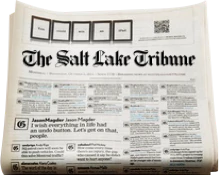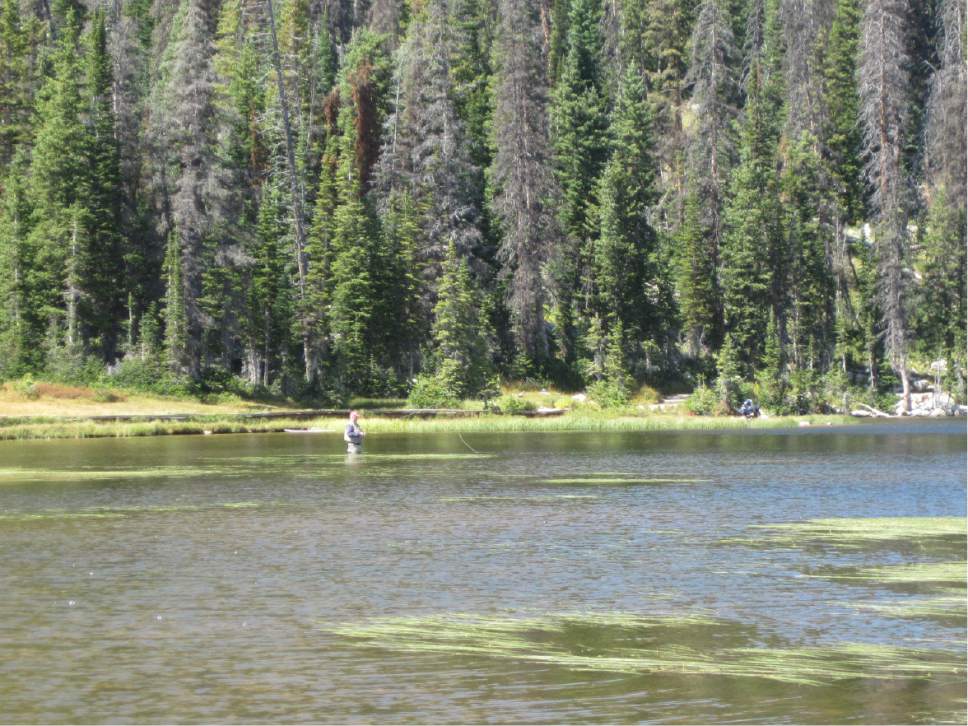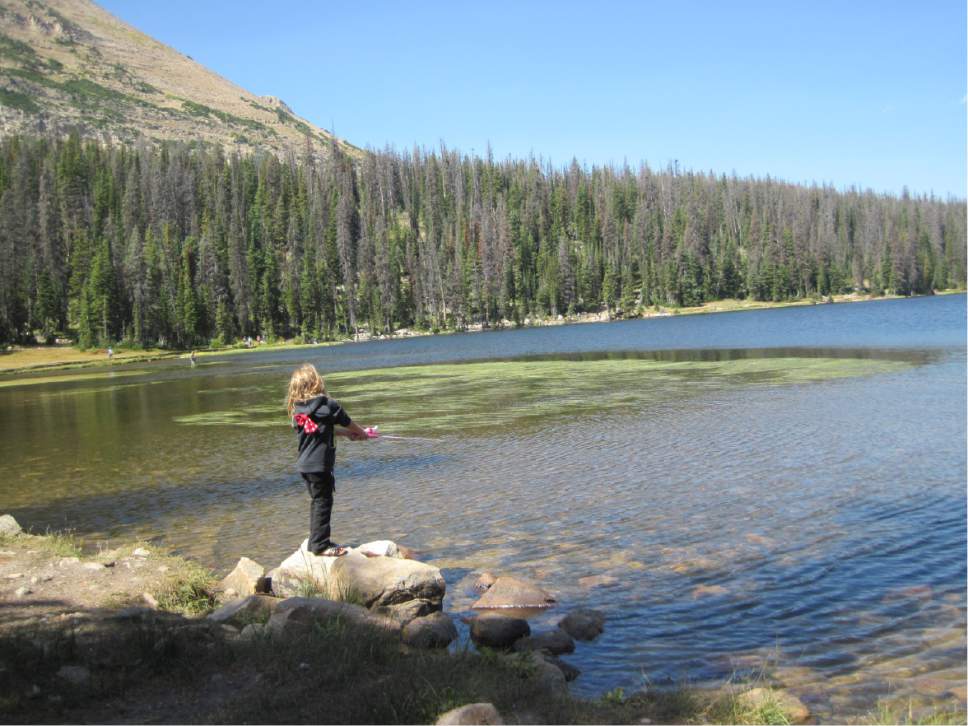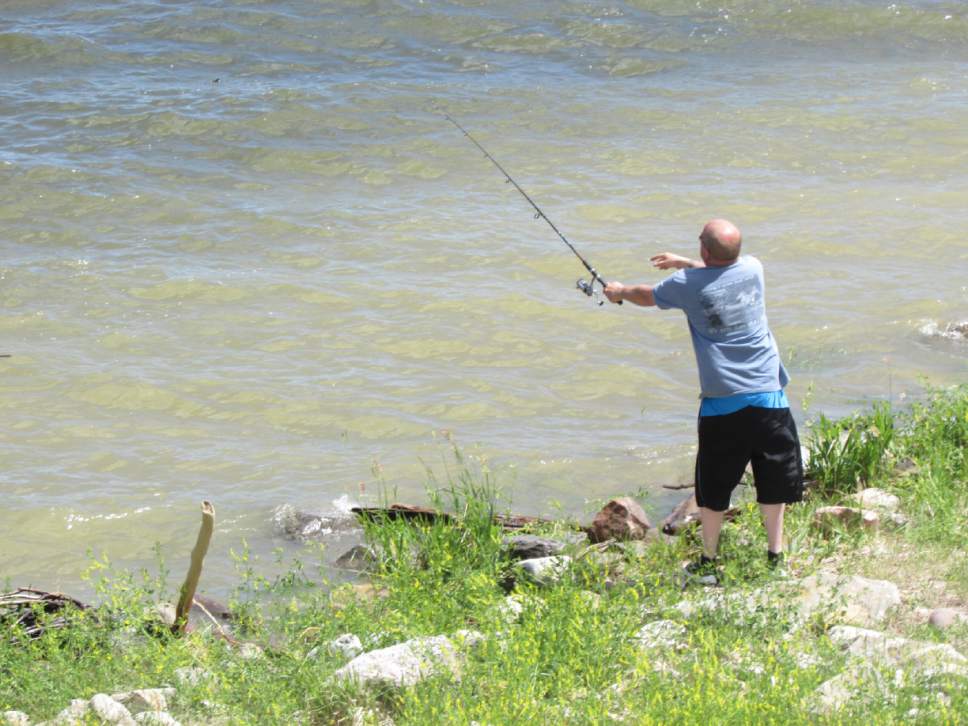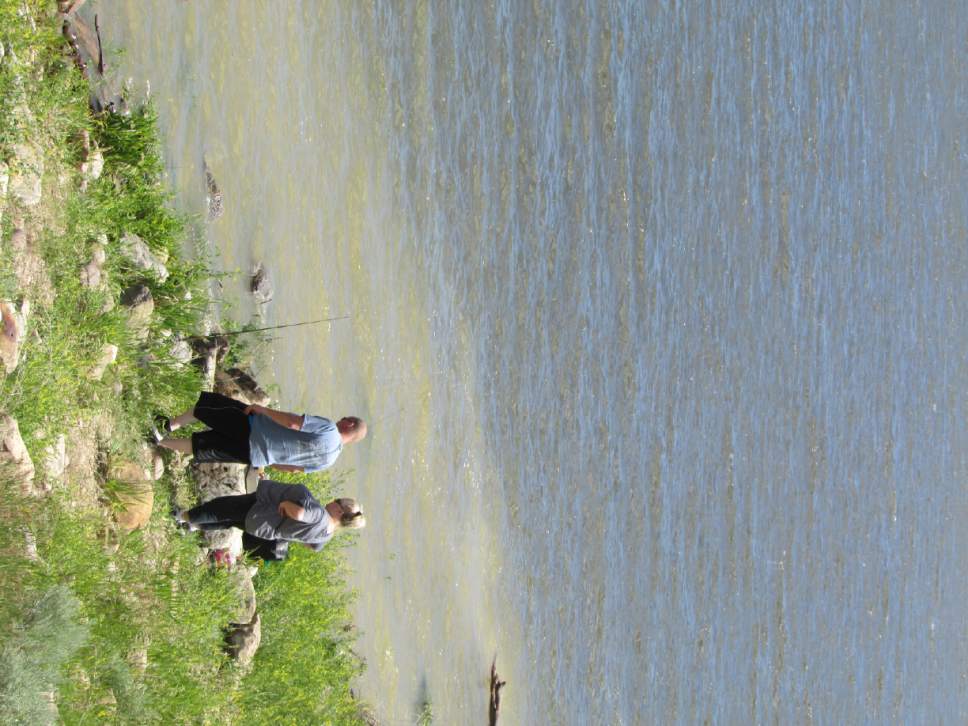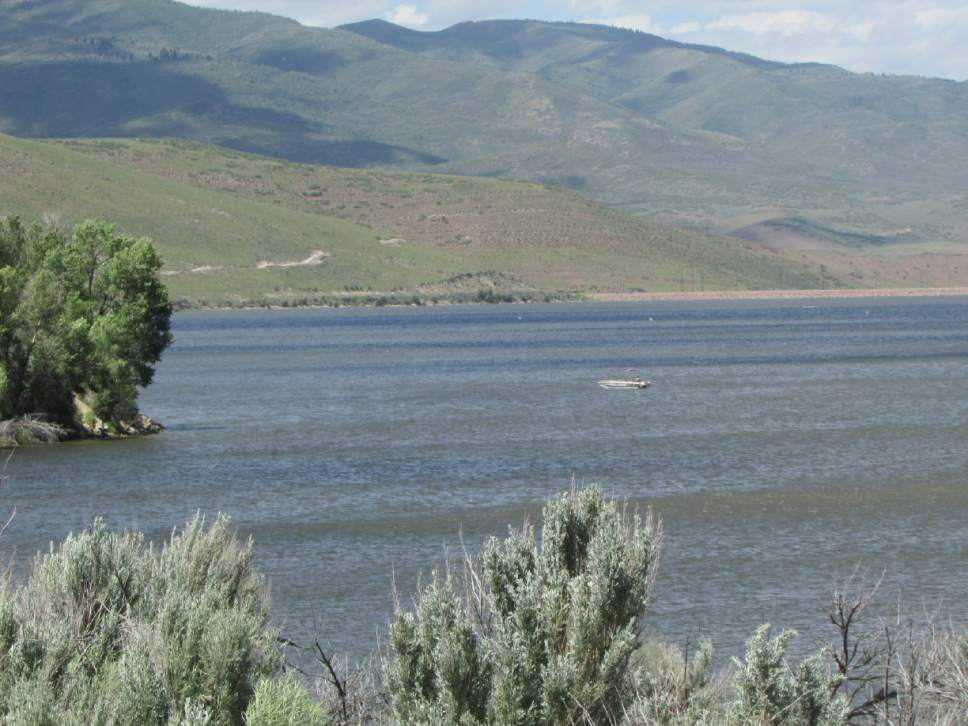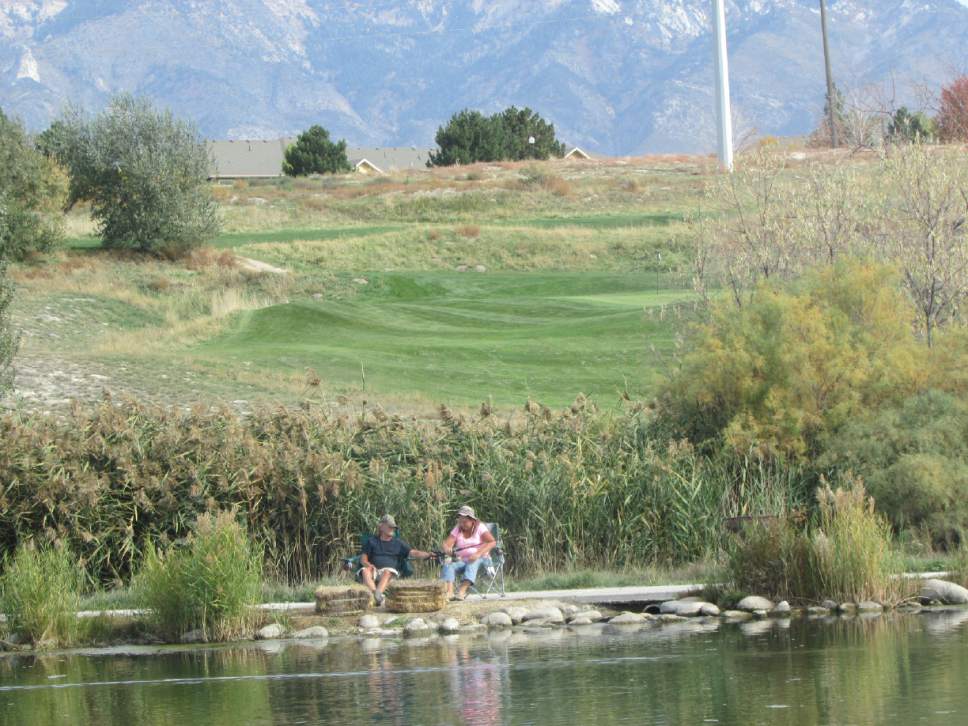This is an archived article that was published on sltrib.com in 2017, and information in the article may be outdated. It is provided only for personal research purposes and may not be reprinted.
After several years of drought in Utah, things changed this winter. Heavy snowpack made rivers run high and filled reservoirs. That difference will help and hurt fishing this summer.
"The high water levels will benefit anglers, particularly later in the summer," said Division of Wildlife Resources sport fishing coordinator Randy Oplinger. "In late summer, fish are often less active when temperatures are warm. Having more water in our reservoirs will help fishing remain good for longer."
Other advantages mean it will be easier to walk from parking lots to shorelines to fish, and boat launching should be less stressful. High water submerges vegetation that has been exposed and growing.
"Young of many of our warmer fish [bass, perch, bluegill and walleye] rely on submerged vegetation," said Oplinger. "The high water should help increase the survival of these fish, which should turn into larger numbers of these species a few years from now."
The disadvantage right now is that most rivers and streams are running so high that it may be early to mid-July before anglers can take advantage of them.
"The streams and rivers are almost unfishable," said George Sommer of Fish Tech Outfitters. "We haven't been recommending people fish those. There is so much water."
Kigen Curtice of Salt Lake-based Western River Flyfishers said the Green River below Flaming Gorge, one of the most popular fly-fishing waters in the state, would be difficult if not unsafe to walk or wade.
"With the flows being high, the Green can be dangerous," he said. "You would have to be extra careful to walk on shore. It is fishable from a boat, but I would not suggest that anybody who is not an experienced boater try to row it."
One longtime expert, Western Rivers' Steve Schmidt, put a good spin on the high water on rivers for future angling.
"These fish have not had a break in five years," he said of trout in rivers that have struggled with low water and heavy angling pressure. "They may be happy they've got water for a change and will be left alone for a while."
The good news is that angling on reservoirs — including many close to the Wasatch Front and Lake Powell — is excellent right now.
Curtice said fishing at Strawberry, Electric Lake and Currant Creek has been good.
"All of the reservoirs close in are doing really well," said Sommer, mentioning Rockport, East Canyon and Echo. "Strawberry has been spotty, which is unusual. Anglers are focused on kokanee. Trout fishing is a little off."
At Lake Powell, the lake is filling rapidly and stripers are feeding on the surface, with the time for "boils" just around the corner. Longtime Lake Powell fishing expert and biologist Wayne Gustaveson said fishing has been good for striped bass between the San Juan and the Escalante. Wahweap is still waiting for the fin topwater action. He said to expect each day to provide more surface action as stripers go after shad for feed.
Gustaveson said smallmouth bass fishing has been good, especially in deep structure like a long point that does not change much as the water comes up. Walleye angling has been good from Bullfrog to Good Hope Bay.
Asked about his favorite fishing spots right now, Oplinger listed Lost Creek, Mantua, Currant Creek, Bid Sandwich, Kolob, Navajo Lake, Strawberry, the high Uinta Lakes (which are just beginning to open up as snow melts), Boulder Mountain Lakes and Monroe Mountain Lakes as good bets right now.
There are special regulations and liberalized limits at Pelican Lake, Millsite Reservoir and Steinaker Reservoir due to dam repairs and planned rotenone treatments.
Oplinger said many waters are starting to get stocked with catchable trout.
"Both our community fisheries and some of the more popular mountain lakes are stocked at least twice a year," he said. "Most are stocked more than that. It depends on the lake and how popular it is."
The community ponds are increasingly relying on warm-water species due to high summer temperatures, but most get stocked with trout in the spring and the fall.
The DWR's fishing report is updated every two weeks and can be accessed at https://wildlife.utah.gov/hotspots/.
"My best advice is to get out and fish," said Oplinger. "Fishing has been very good so far this year and I anticipate that the high snowpack will extend the good fishing conditions later into the summer than usual. … Fishing is great at the lower elevations now, and streams should get good in the next few weeks. Then into July, the high mountain lakes should be snow-free and fishing should be good at those."
Twitter: @tribtomwharton
